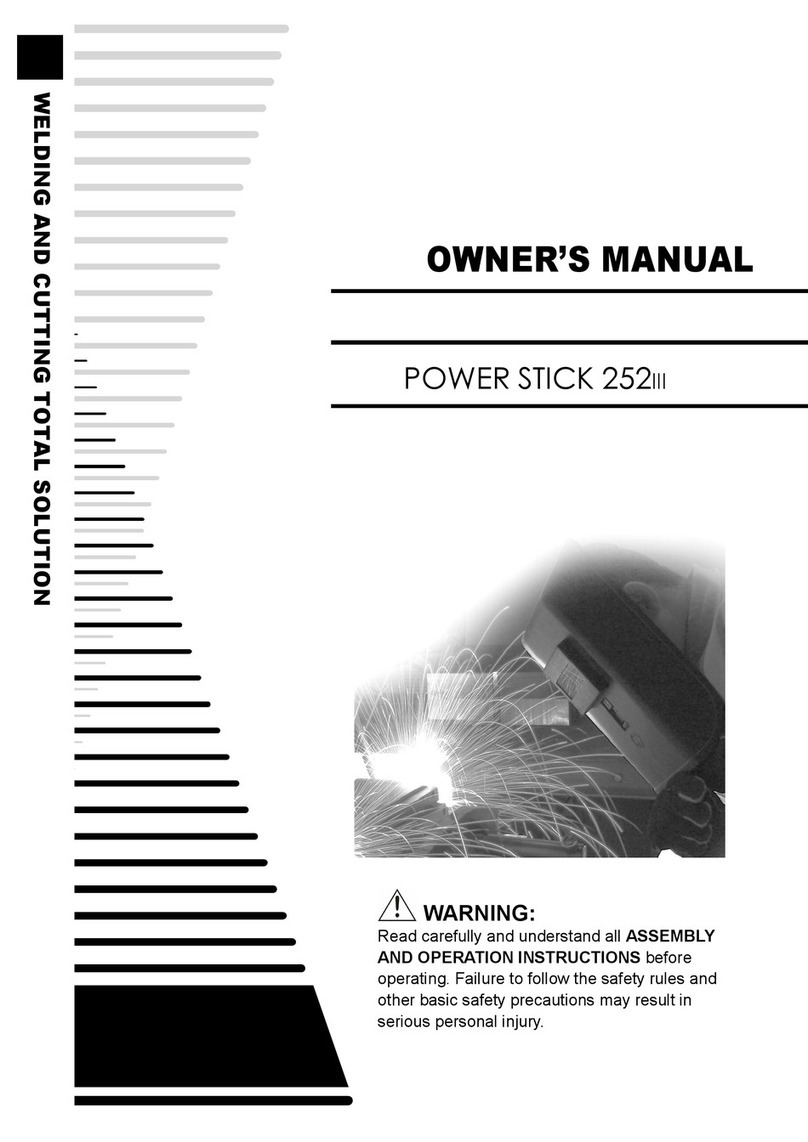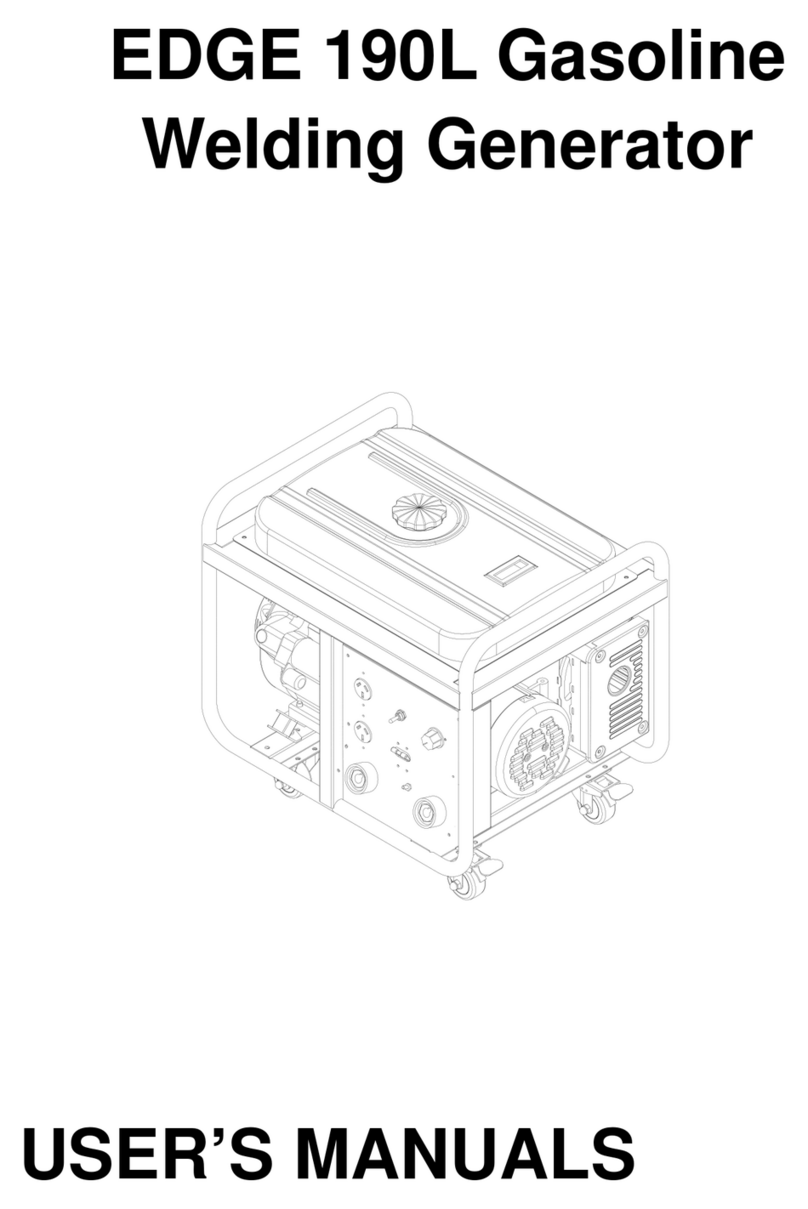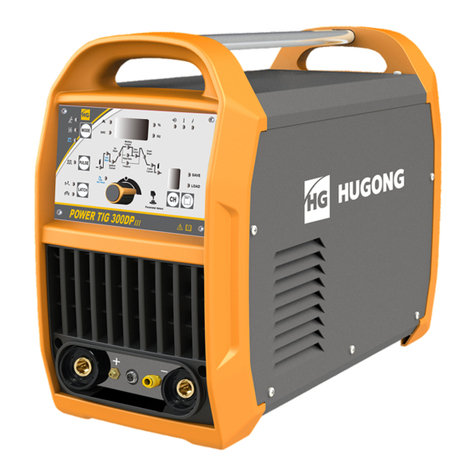
8
Technical Specifications
3.1 Working Environment
* The surrounding temperature range: when welding: water cooling: -10 ~﹢40℃,
During transport or in storage:﹣25 ~﹢55℃.
* Relative humidity: when at 40℃: ≤50%, when at 20℃:≤90%.
* The dust, acid and erodible materials in the air can not exceed the amount required by the mode (apart
from the emissions from the welder). No violent vibration at the job site.
* Altitude no more than 1,000m.
* Keep from raining when it is used outdoor.
* The wind speed should no more than 1m/s around the operation places.
3.2 Requirement for Main Supply
* The voltage oscillogram should display actual sine wave,.
* The oscillation of the supplied voltage should not exceed ±15%of the rated value.
3.3 Principle
The machine receive 3~XXXV AC through air switch (SW1), rectify the current by 3 phases
rectifier(BR1), get DC through input reactor (inductance) and capacitance C5 & C9, the current will be
transited to 20KHz AC by IGBT (IGBT 1, IGBT 2), then go to middle frequency transformer (T1) , fast
recovery diode (D1, D12), and output reactor (L0). Finally the machine will have stable DC output for
welding.
3.4 Main construction
INVERMIG III series IGBT welder adopts movable case structure: the upper part of front panel includes
digital current meter, voltage meter, arc ending welding current adjusting knob, arc ending welding
voltage adjusting knob, inductance control adjusting knob, welding function selector press-button,gas
ending arc mode selector press-button, wire diameter adjusting knob, protectd gas selector press-button,
Auto Unified function selector press-button, gas checking press-button,power indicating light, protection
indicating light, working light, The lower part of front panel includes “+” socket, “-” socket, socket of
connecting cable of wire feeder. The back panel includes power cable, ground bolt, and socket of gas
heater, Power swith,Fan.There are four wheels on the bottom of machine, and host ring and handle on
the top of machine.
For the inside of machine, the upper part includes control transformer, 4pcs bcboard.3phase rectifier
bridge,2 IGBT, below have main transformer, the lower part includes secondary fast recovery
diode,radiator and electric reactor,The have power component of radiator is installed in the middle of
machine.
The wire feeder includes motor, speed reducer, wire feeder roll, spool, gas valve, cable connector, gas
hose, welding current potentiometer, welding voltage potentiometer, spot welding switch, etc.
Air torch






























